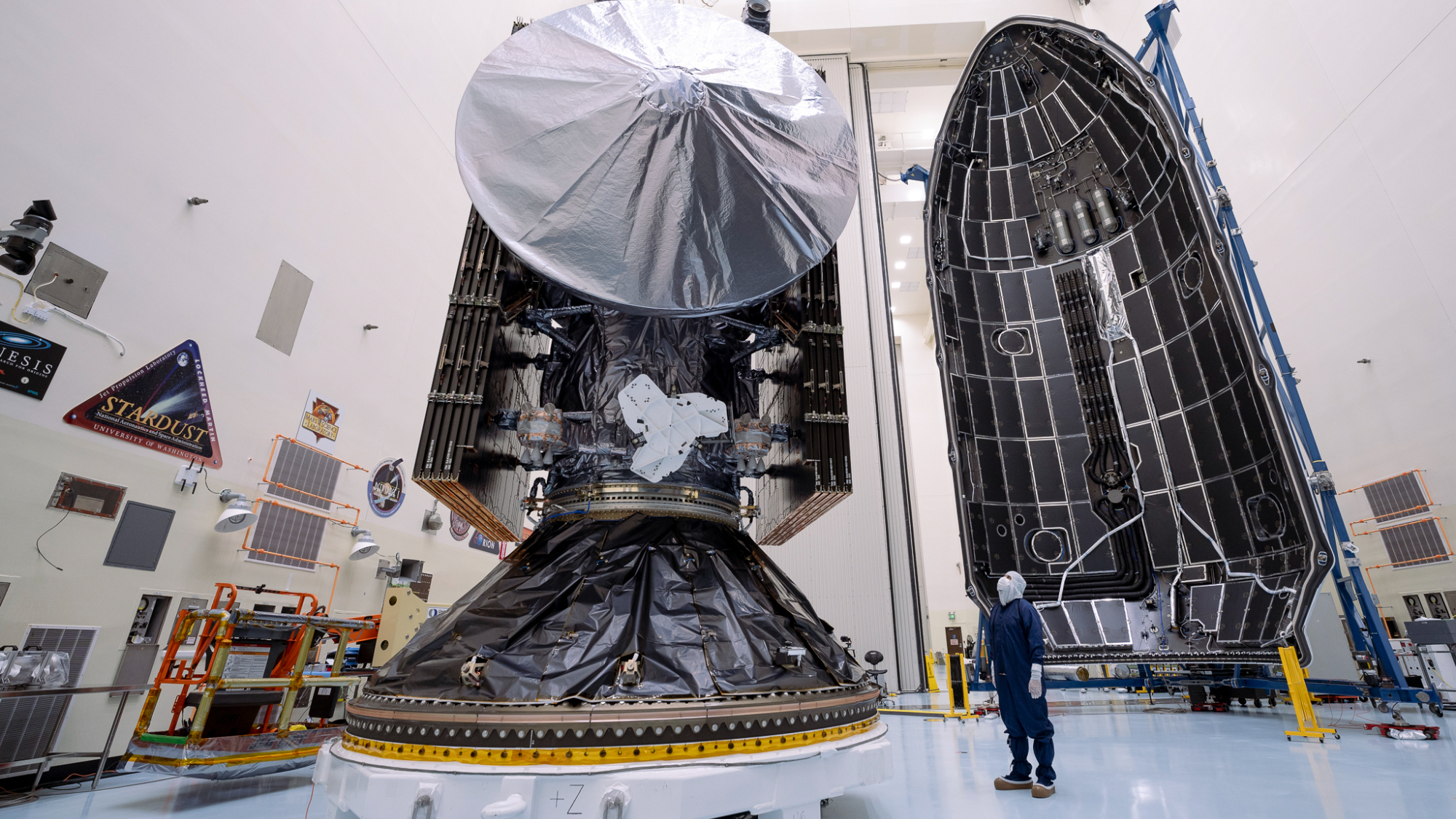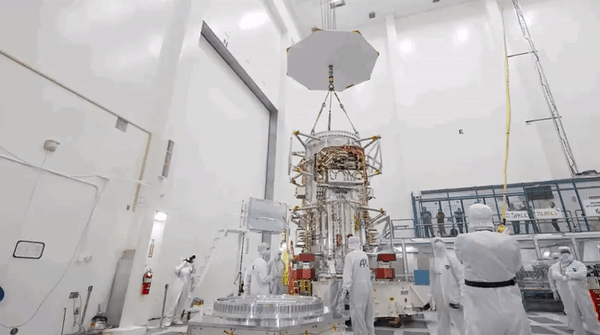
We'll have to wait a bit longer to see NASA's Europa Clipper probe get off the ground.
The $5 billion Europa Clipper mission had been scheduled to launch on Thursday (Oct. 10) atop a SpaceX Falcon Heavy rocket from NASA's Kennedy Space Center (KSC), on Florida's Atlantic Coast. But Hurricane Milton has nixed that plan.
"NASA and SpaceX are standing down from the Thursday, Oct. 10, launch attempt of the agency's Europa Clipper mission due to anticipated hurricane conditions in the area," NASA officials wrote in an update on Sunday (Oct. 6).
"Hurricane Milton is expected to move from the Gulf of Mexico this week, moving east to the Space Coast," they added. "High winds and heavy rain are expected in the Cape Canaveral and Merritt Island regions on Florida's east coast."
Launch teams have secured the probe inside SpaceX's hangar at KSC's historic Launch Complex 39A. The rest of the NASA center has begun preparing for Hurricane Milton's arrival as well, NASA officials said.
"The safety of launch team personnel is our highest priority, and all precautions will be taken to protect the Europa Clipper spacecraft," Tim Dunn, senior launch director at NASA's Launch Services Program, said in the update.
Related: Why NASA's Europa Clipper mission to Jupiter's icy moon is such a big deal
It's too early to predict when Clipper will be able to fly, but the mission has a fair bit of time: Its launch window extends through Nov. 6.
"Once we have the 'all-clear' followed by facility assessment and any recovery actions, we will determine the next launch opportunity for this NASA flagship mission," Dunn said.

If all goes according to plan, Clipper will reach the Jupiter system in 2030. The probe will orbit the gas giant but study Europa — which is thought to harbor a huge ocean of liquid water beneath its icy shell — up close over dozens of flybys.
Clipper will use its nine science instruments to characterize that ocean, helping to assess Europa's potential to host life was we know it. The probe's observations will also help scientists identify good potential landing sites for a life-hunting mission to Europa's surface, which NASA aims to launch in the not-too-distant future.







